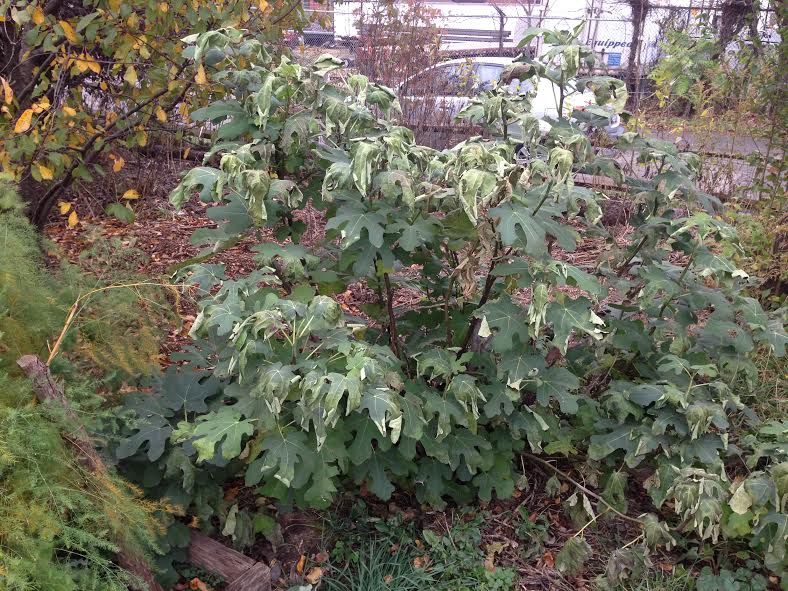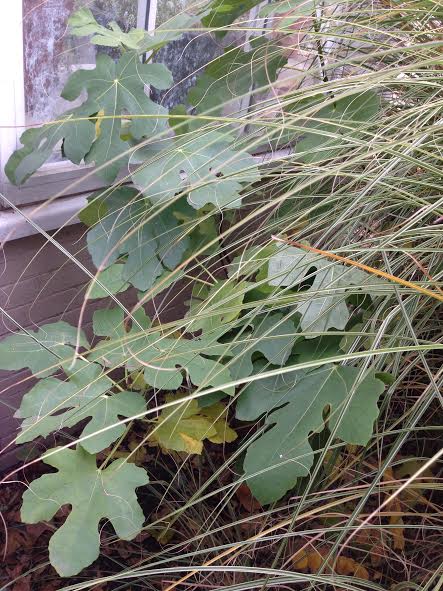Check in weekly, on Wednesdays, to read our new post on gardening, harvesting, and making use of that fine, extra-local produce! We’ll share tips and techniques, gleaned from our urban farms and gardens. Email info@growpittsburgh.org with any topics you’d like us to cover.
One of the benefits of living in the Pittsburgh area is that we can grow figs! These 10-30ft deciduous trees can be a beautiful addition to landscaping, while providing delicious fruits. While fig trees are a semi-tropical plant that prefer balmy weather, some varieties can be grown in colder climes if they’re carefully protected over the winter. Most of the Pittsburgh area is considered zone 6b, so look for fig varieties with hardiness ratings at least to this zone. Figs can also be grown in large containers and brought inside in the winter. However, figs produce the most and grow healthiest when they are in the ground.

This fig tree, located at our Braddock Farms, shows some frost damage. We’ll wait for the tree to drop its leaves before wrapping it for the winter.
Here’s how to protect them over the winter!
First, make sure your fig variety is hardy in the zone where you are living. (Most of the Pittsburgh area is now considered zone 6b.) Less hearty fig varieties can be grown in containers and brought inside during the winters.
- Wait for your fig tree to drop its leaves.
- Prune young fig trees back about halfway, to encourage branching and bushy growth next season. For older, larger trees, pull the branches together and carefully bind with twine.
- Mulch the tree heavily with straw or leaves. Fill the gathered branches with mulch or secure mulch around the top areas of a young tree by wrapping with twine.
- Wrap the mulched tree with burlap or brown paper, tying or stapling to secure.
- Dig a circular shallow trench a foot or two outside the base of the mulched tree. Create a second layer of mulching and wrapping, placing the bottom of the wrapping material in the trench.
- Fill in the trench with soil, to secure the wrapping.
- Place a bucket insulated with straw upside down on top of the wrapped tree.

This fig tree at our Frick production site, is in a sheltered location, with a greenhouse on one side and landscape plants on the other. It doesn’t show any frost damage yet. We’ll wait for the leaves to drop before wrapping it for the winter.
If you’d like to see it done, check out this great video on wrapping figs. To keep your soil safe for this edible crop, though, we suggest replacing the tar paper that’s mentioned in the video with something less likely to leach toxins. Cardboard, heavy brown paper, or burlap can work as alternatives.
For more information on growing figs, check out this article from our archive.
